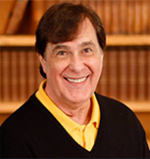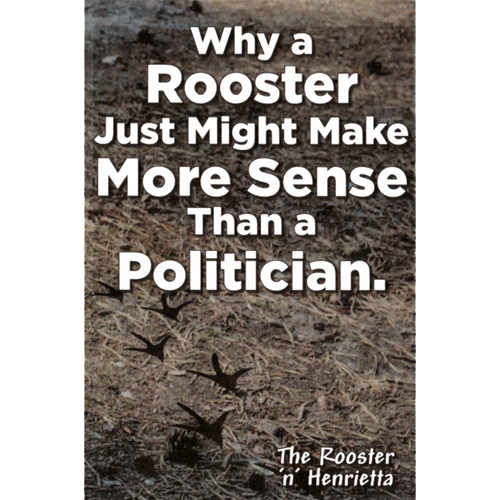Not One Inch – The Battle Cry for Property Rights by Tom DeWeese
- 2019-02-01
- By admin
- Posted in Latest News

Tom Deweese
I have been pushing hard lately to let people know that, no matter how big and powerful the opposition, the assault from big government forces can be stopped. That’s why I want to tell you about a recent major victory in Louisiana where a wonderful, determined group of residents rose up and stopped the implementation of the Caddo Lake National Heritage Area. By the way, this is the second NHA we’ve stopped. The Crooked Road NHA in Virginia was successfully shut down by us a few years ago.
National Heritage Areas are one of the most despicable stealth land grabs in the nation. Here’s why. Americans love history. And we love preserving significant places that played an important role in the making of our unique nation. So when we hear of a new plan in our area presented offering a chance to preserve some of our local heritage we are interested and even supportive.
But, in this day of massive government control over so much of our land, our economy, and our basic ability to live free lives, we must be cautious and look at the details of plans, no matter how innocent or well meaning they may seem.
The residents affected by the Caddo Lake NHA were suspicious because so little information was being released about the project. Who was behind it? Where was the money coming from? Above all, what specific areas were going to be affected? So some determined residents did their homework. They learned the promises of increased tourism and boosts to the economy were, at best, empty. Rather, they learned NHA’s are little more than pork-barrel earmarks that endanger private property rights and local governmental powers. And a very specific danger is that Heritage Areas have very definite boundaries that come with very definite consequences for folks who reside within them. That’s because funding and technical assistance for Heritages Areas is administered through the National Park Service, a federal agency with a long history of hostility toward private landowners.
Private organizations and planning groups are the actual recipients of most of these funds supposedly earmarked for the Heritage Area. These entities operate as the promoters of the NHA in partnership with the Park Service. Eventually they form a commission or a “managing entity” to enforce the “vision” to implement the Heritage Area.
Typically such commissions consist of strictly ideological special interests groups. In the mix of these groups one will find all of the usual suspects: environmental groups, planning groups, historic preservation groups, all with their own private agendas – all working behind the scenes, creating policy. The managing entity then sets up non-elected boards and regional councils to oversee policy inside the Heritage Area that stretches over numerous communities and counties.
Here’s how those special interest groups operate with the funds that they are given. They go to local county boards and city councils and announce that Congress has passed legislation designating the Heritage Area and that the community is now within those boundaries. They pull out maps and announce the properties they have identified to be significant for preservation.
However, as the managing entity, they don’t have the power to make laws but the local elected officials do and so the partnership is born, fed by the federal money. Now the managing entity will help create tools, legislation, guidelines and whatever regulatory procedures are needed to make the management plan come into fruition.
As proponents talk about historic preservation inside the Heritage Area, one will also find the catchwords “resource conservation” and “resource stewardship,” for example. That’s the clue to watch for. It’s all about control. Control of the land, control of resources, control of decision making and ultimately, creating a more powerful and dictatorial government. In addition, Heritage Area proponents refuse to supply a simple written notification to property owners that their land will be inside the boundaries.
National Heritage Areas depend on federal tax dollars because they lack local interest— and not a single Heritage Area has ever succeeded in attracting that interest throughout their entire infinite lives. The federal money is the villain. There are 49 National Heritage Areas across the country so far – with more, now being considered around the country. Caddo Lake NHA, if legislated, would affect 900 square miles of private property, businesses, and whole communities. That’s a massive area to cover.
What about property rights protections? When property owners express concern that their property could be taken in the process – proponents have a ready-made answer. Don’t worry, they say – they quickly point to language in the Heritage Area bills that assure property rights protections.
Written into each and every Heritage Area bill is this line: “Nothing in this subtitle…abridges the right of any property owner… including the right to refrain from participating in any plan, project, program, or activity conducted within the National Heritage Area. . .” In other words, say proponents, homeowners are assured that they actually have the right to opt out of the Heritage Area – so there is absolutely no threat to your property rights. Wow!
That language is nothing but a flimflam to keep you calm and ease your concerns, because it is physically impossible to opt out of an official government boundary that has been created by federal legislation and federal funds. It is also impossible to simply declare that you are going to opt out of any of the land-use regulations, down-zoning, or other restrictions that result from the Heritage Area designation.
When I addressed an audience of 400 residents who live inside the proposed boundaries of the Caddo Lake NHA I asked for a show of hands from everyone who wanted to opt out of it. Every hand in the room went up. As the restrictions on property are steadily legislated into place due to the NHA, opting out is simply not an option.
As I and others worked to oppose Heritage Areas, we asked proponents in Congress if they had commissioned property rights experts to look over the legislation to find any dangers. We said, “Have you put these bills before experts, specifically public interest property rights attorneys?” The answer we received was “No, and we don’t plan to.”
Real private property ownership lies in one’s ability to do with your property as you wish. Zoning and land-use policies are local decisions that have traditionally been the purview of locally elected officials who are directly accountable to the citizens that they represent. But National Heritage Areas corrupt this inherently local process by adding federal dollars, federal mandates, and federal oversight to the mix, along with an army of special interest carpet baggers who call themselves Stakeholders.
The experience with at least 49 such Heritage Areas now in existence nationwide clearly shows such groups will convert this money into political activism to encourage local community and county governments to pass and enforce strict zoning laws.
Heritage Areas proponents like to hold up a report from the Government Accounting Office that says “National Heritage Areas do not appear to have affected private property rights. . .” And this is why that report is meaningless.
In their own words, proponents say their feasibility study for the Caddo Lake Heritage Area is to “identify and evaluate alternatives for managing, preserving, and interpreting nationally important cultural and historic landscapes, sites, and structures existing under and around Caddo Lake.” For everyone of those descriptions there is an NGO that makes it their mission to impose it, and there is a federal grant to enforce it. That means land is locked away from private development, diminishing growth for the community. It also means hunting and recreational use of the land may well be curtailed. Eventually, such restrictions will take away the community’s economic base.
These are the reasons why the specific language in the Heritage Area legislation designed to protect private property rights is basically meaningless to the actual outcome. While the land may not be specifically locked away in the name of the federal designation, its very existence creates the pressure on local government to act. The result is the same.
The fact is the Heritage Area designations are completely unnecessary. Most of the historic sites are already under the control of the National Park Service. Most Presidential birthplaces and significant historic sights are also well preserved.
Every step of land in America had something from the past occur on it. Proponents of Heritage Areas are using our great love of history as an emotional sledgehammer to impose a massive federal porkbarrel scheme that enriches the pockets of private advocacy groups by helping to impose draconian controls over the dreams of average American homeowners.
In short, the greatest threat from the Heritage Area is that it creates a pipeline of federal money – and, consequently political power – to these national organizations to promote their specific agendas over your community and its development.
The proposed Caddo Lake Heritage Area includes the classic ingredients of all other Heritage Areas now enforced across the nation. It is massive in size. It is being pushed by the same special interests.
Property owners located around the lake have proven themselves to be the best stewards. That’s why it’s beautiful and teeming with wildlife. And that’s why those who seek to enforce the Heritage Area covet to control it. There is already a thriving tourist industry and there are lots of environmental protections on and around the lake. The Heritage Area only serves to create another layer of bureaucracy and massive grant money.
The property owners inside the proposed boundaries of the Caddo Lake did their homework and realized that if they owned property on the shore line most likely they would see their use of that land pushed back from the edge of the lake. They would most likely lose their private boat docks. Worst of all, decisions over natural habitat would take precedent over their own, even though they had lived in harmony with the environment and encouraged a thriving local flora and fauna for two hundred years. That’s how it works. Little by little, the restrictions set in.
So the people in the Caddo Lake area saw the storm that was headed their way and they said no! They stood up to the behemoth of the partnership of government and powerful private NGOs determined to force their “vision” on them. They called themselves “Caddo Lakes Last Stand!”
The residents attended meetings, asked questions, researched, handed out reasonable arguments, and they never allowed the proponents to dismiss them or their opposition. They fully understood that they were engaged in a battle to preserve the unique American system that our Founding Fathers worked so hard to guarantee. That is true heritage preservation.
Above all, they understood that the only way to make sure government doesn’t abuse its power is to not grant it in the first place. Those residents know they have only won the first round. The special interests will be back to try again. They always do. That’s why the battle cry of the Caddo Lake’s Last Stand is “Not one inch of this ground will be put in a National Heritage Area.” That kind of determination wins battles.
It’s the battle cry every property owner in the nation must take against the many efforts to destroy this precious land. Not one inch.
TOM DEWEESE

Tom Deweese
Tom DeWeese is one of the nation’s leading advocates of individual liberty, free enterprise, private property rights, personal privacy, back-to-basics education and American sovereignty and independence.
Search:
Categories
Archives
- April 2024
- January 2024
- December 2023
- November 2023
- August 2023
- July 2023
- June 2023
- May 2023
- April 2023
- March 2023
- February 2023
- January 2023
- December 2022
- November 2022
- October 2022
- September 2022
- August 2022
- July 2022
- June 2022
- May 2022
- April 2022
- March 2022
- February 2022
- January 2022
- December 2021
- November 2021
- October 2021
- September 2021
- August 2021
- July 2021
- June 2021
- May 2021
- April 2021
- March 2021
- February 2021
- January 2021
- December 2020
- November 2020
- October 2020
- September 2020
- August 2020
- July 2020
- June 2020
- May 2020
- April 2020
- March 2020
- February 2020
- January 2020
- December 2019
- November 2019
- October 2019
- September 2019
- August 2019
- July 2019
- June 2019
- May 2019
- April 2019
- March 2019
- February 2019
- January 2019
- December 2018
- November 2018
- October 2018
- September 2018
- August 2018
- July 2018
- June 2018
- May 2018
- April 2018
- March 2018
- February 2018
- January 2018
- December 2017
- November 2017
- October 2017
- September 2017
- August 2017
- July 2017
- June 2017
- May 2017
- April 2017
- March 2017
- February 2017
- January 2017
- December 2016
- November 2016
- October 2016
- September 2016
- August 2016
- July 2016
- June 2016
- May 2016
- April 2016
- March 2016
- February 2016
- January 2016
- December 2015
- November 2015
- October 2015
- September 2015
- August 2015
- July 2015
- June 2015
- May 2015
- April 2015
- March 2015
- February 2015
- January 2015
- December 2014
- November 2014
- October 2014
- September 2014
- August 2014
- July 2014
- June 2014
- May 2014
- April 2014
- March 2014
- February 2014
- January 2014
- December 2013
- November 2013
- October 2013
- September 2013
- August 2013
- June 2013
- April 2013
- October 2012
- May 2012
- September 2011



